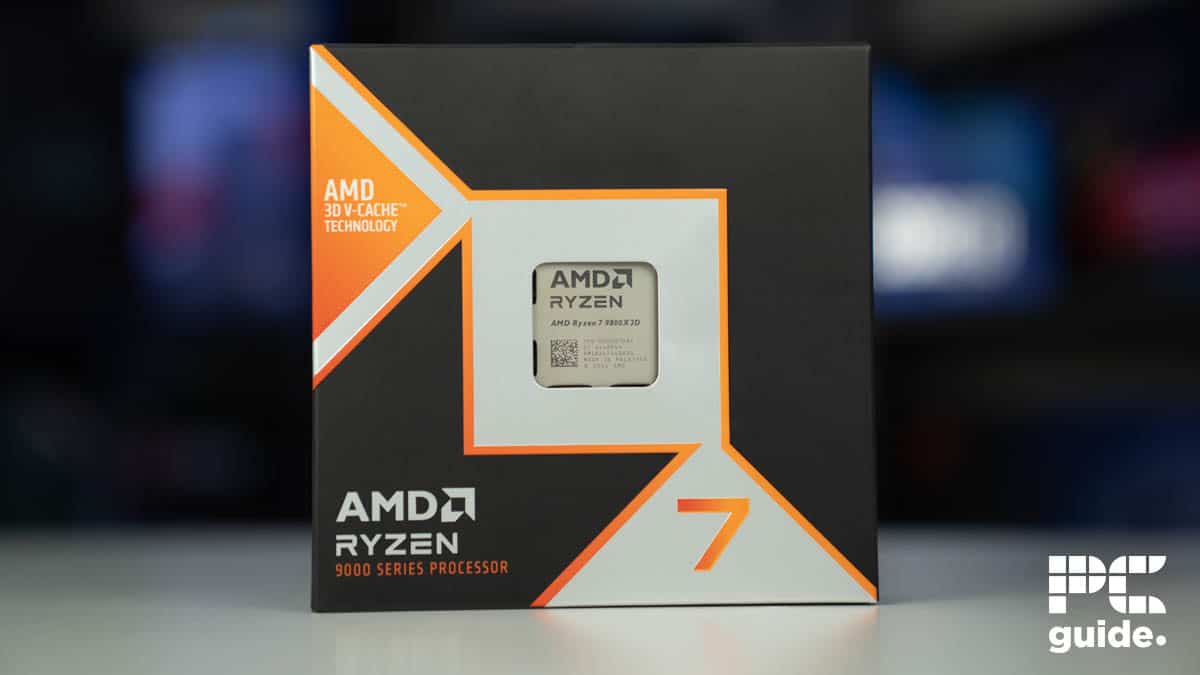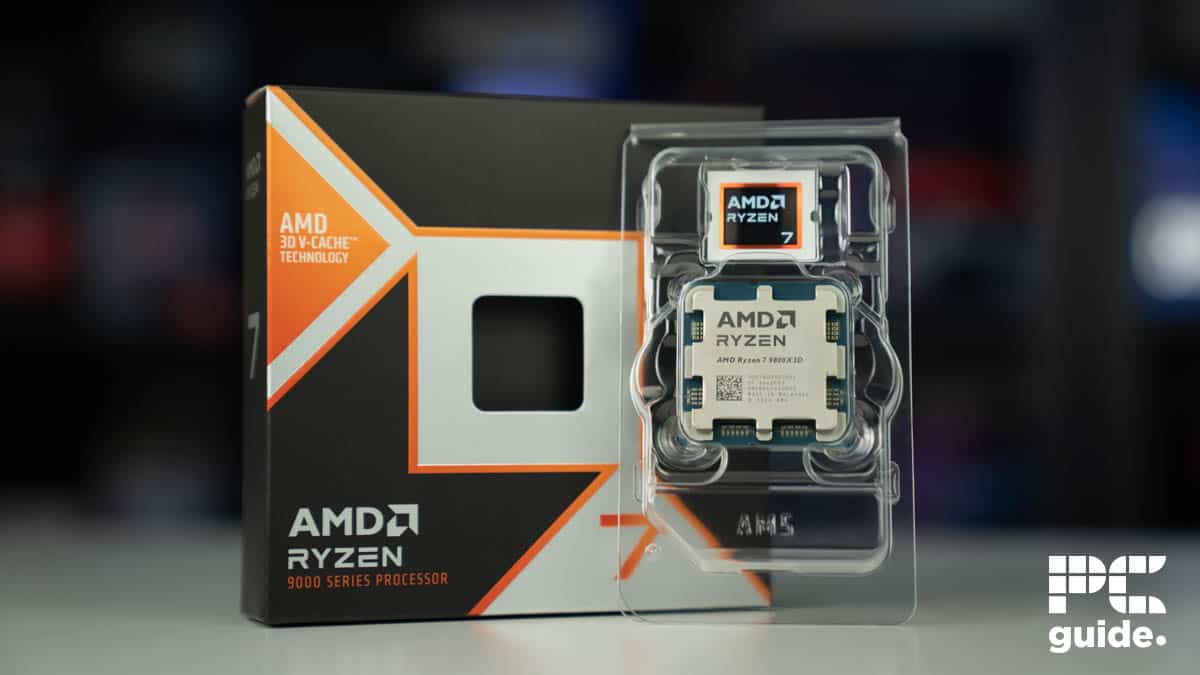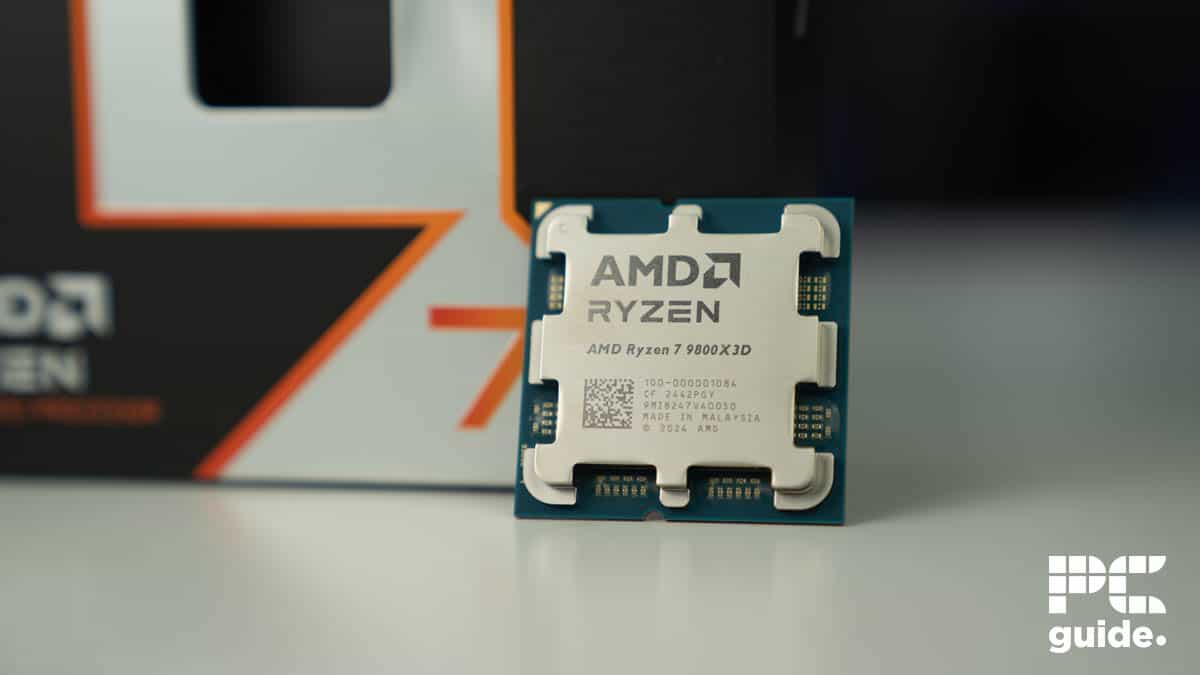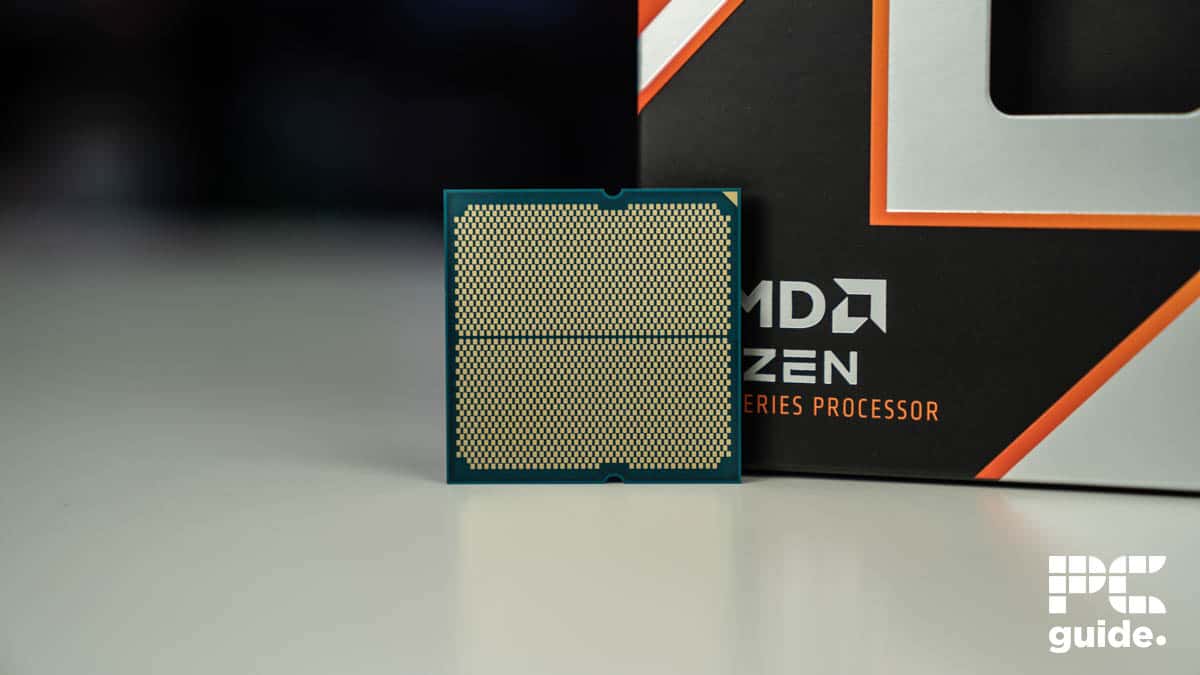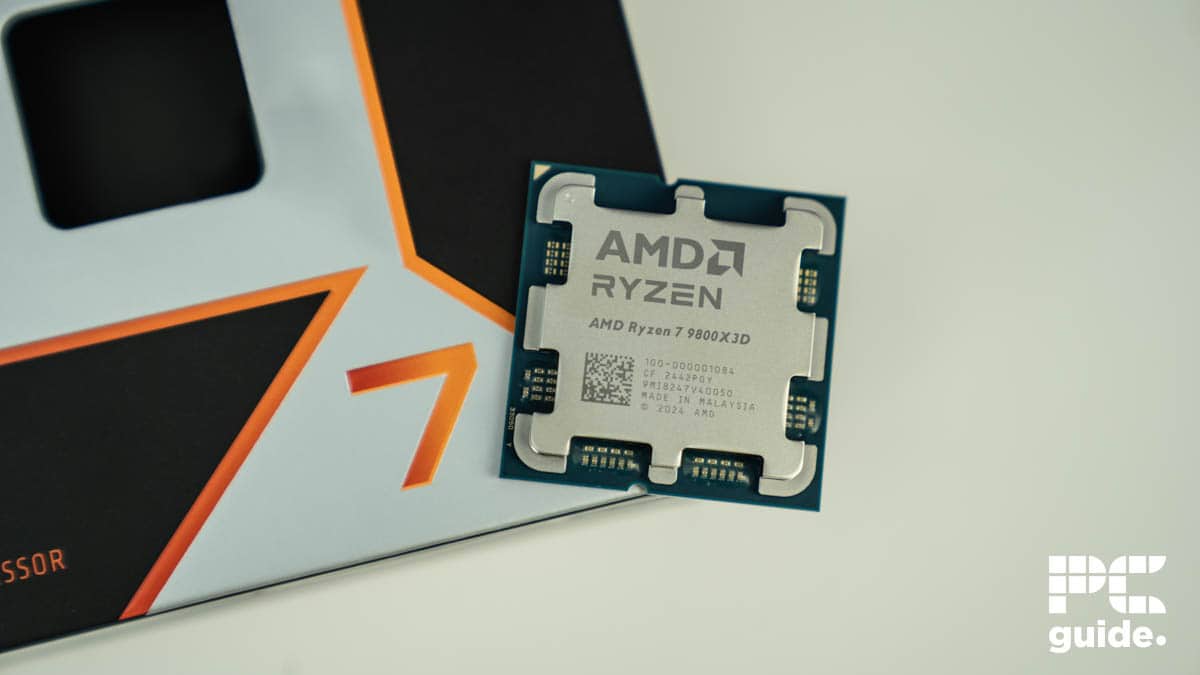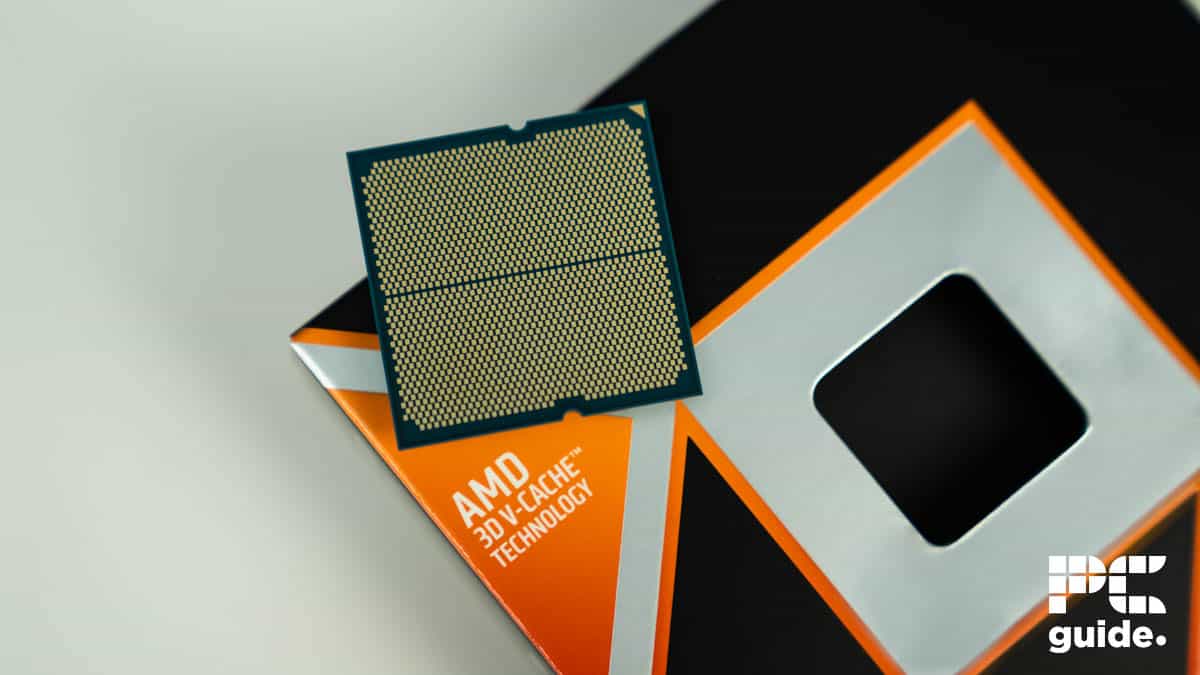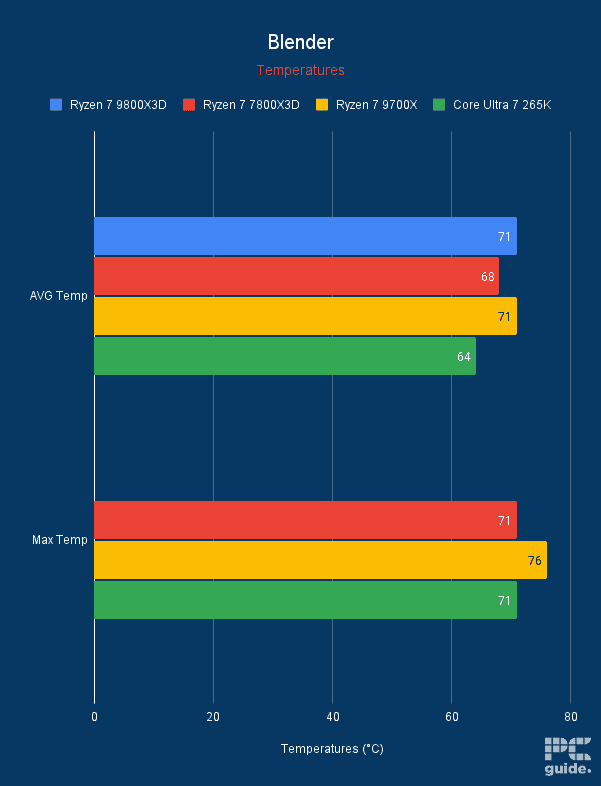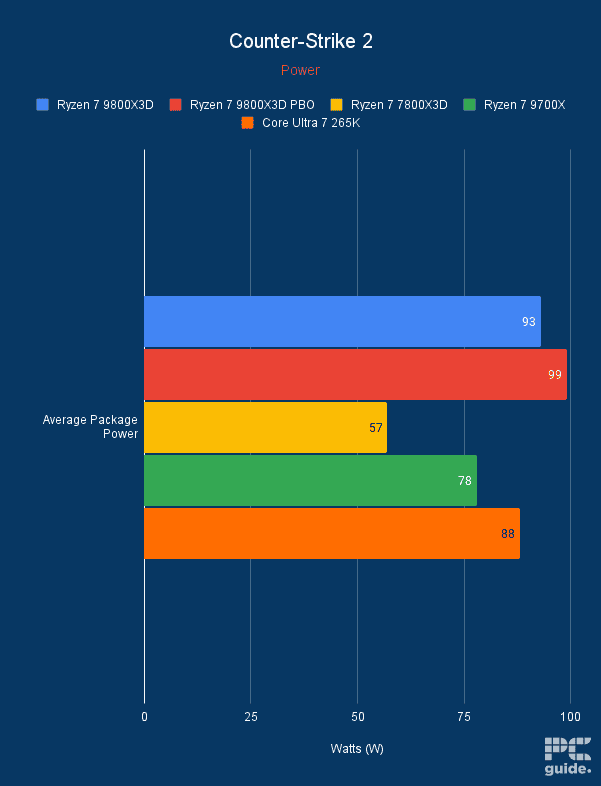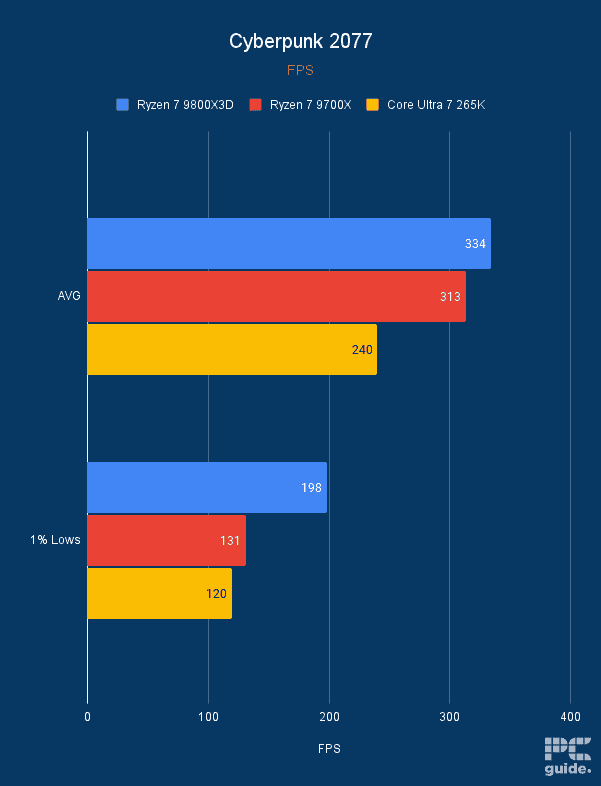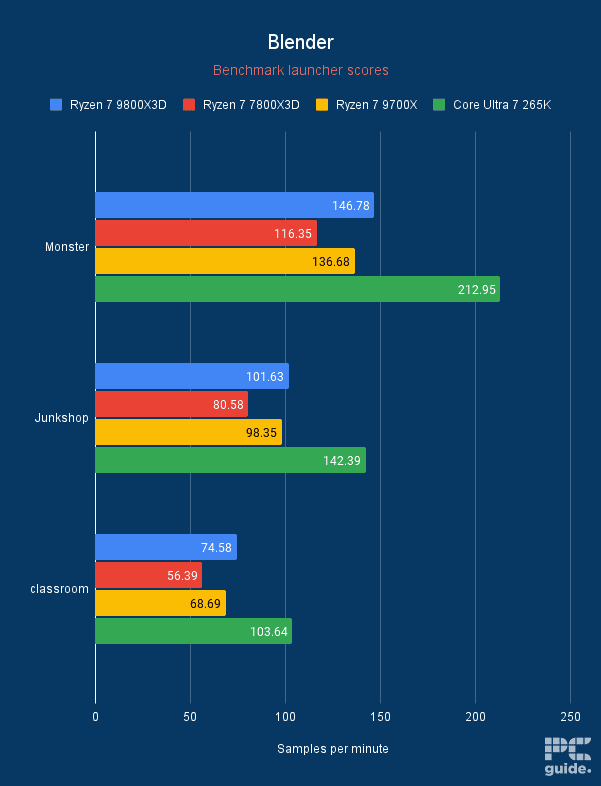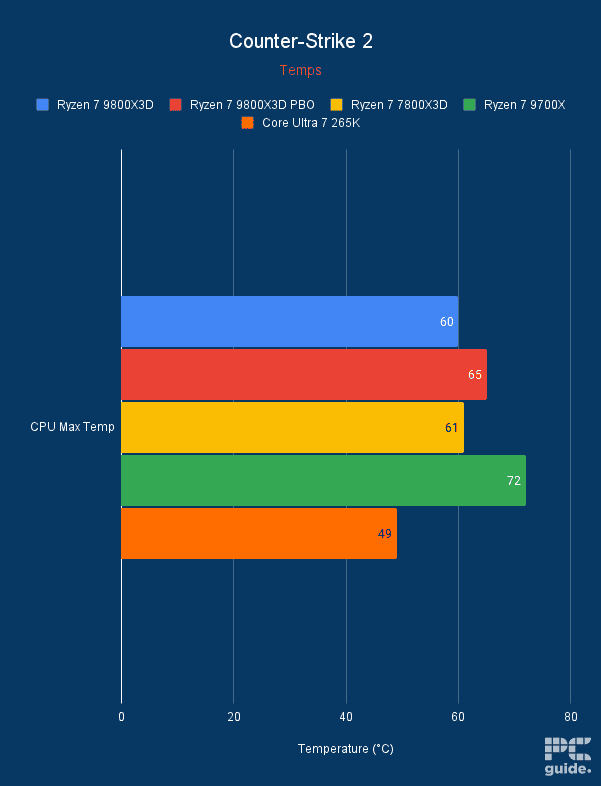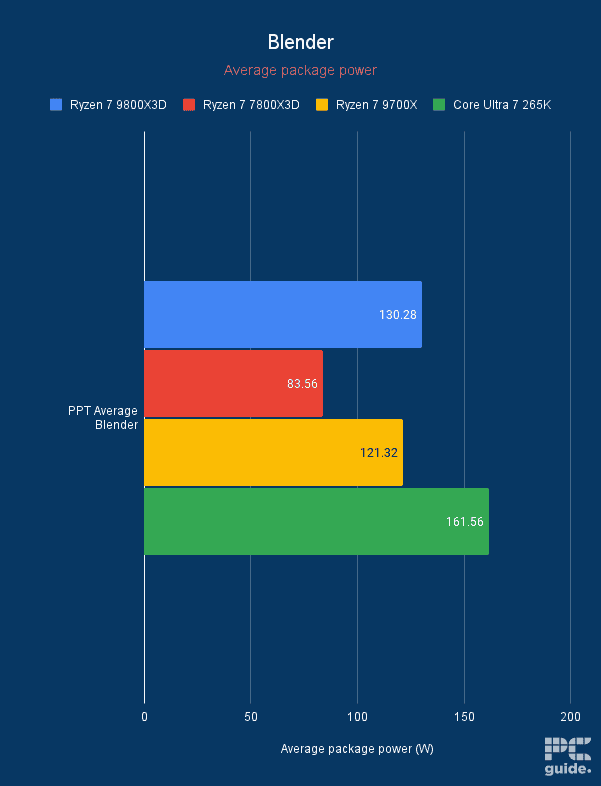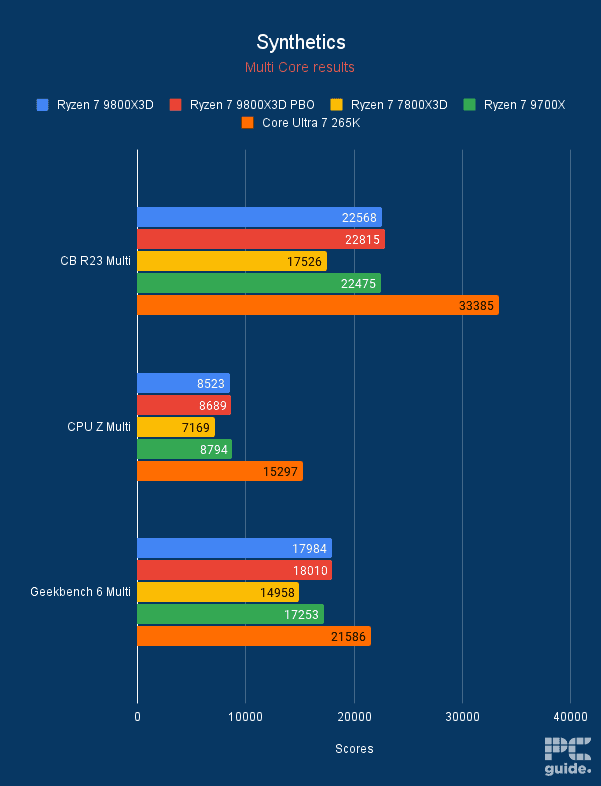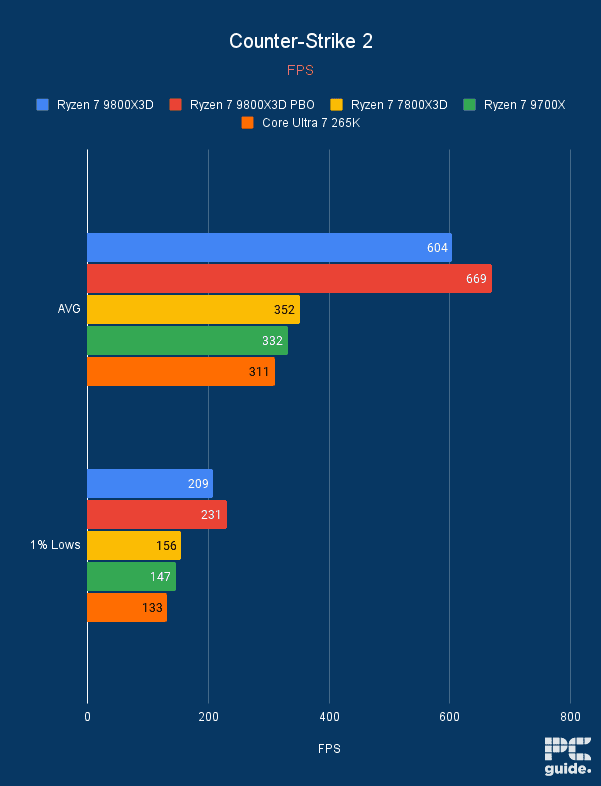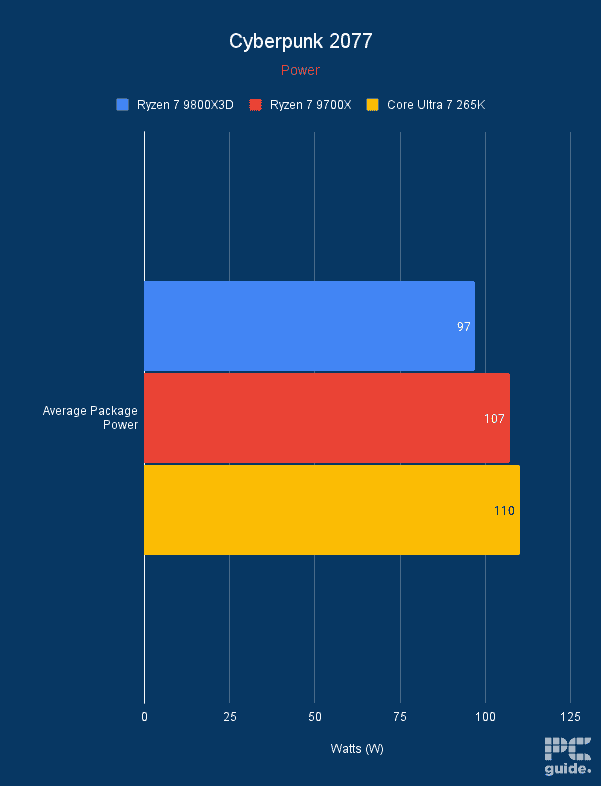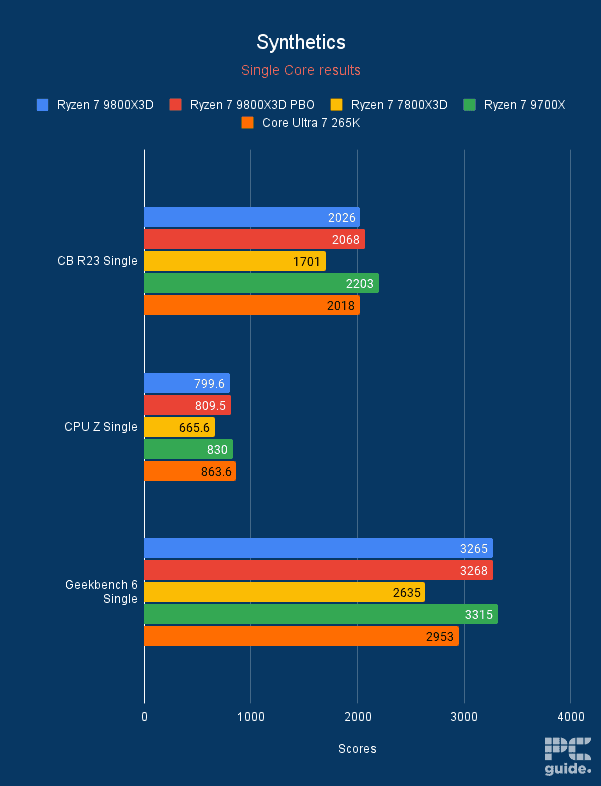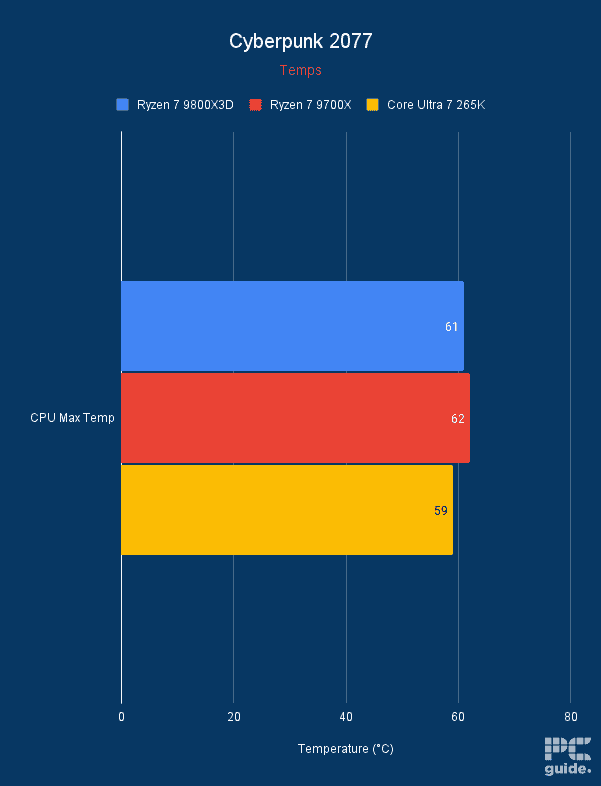AMD has brought out its new and improved generation of X3D processors that have been making waves since their release. We’ve been impressed with the X3D offerings so far, especially the 7800X3D which introduced the technology to AM5, so I was excited to see if the 9800X3D stood up to the hype. Here’s how it performed in our tests, and how it may just be the new king of gaming CPUs.

Specifications
- Cores: 8
- Threads: 16
- Boost clock speed: 5.2GHz
- Base clock speed: 4.7GHz
- L3 cache: 96MB
- TDP: 120W
- Platform: AM5
What We Think
The 9800X3D has unlocked its potential and become the leading processor in the market. The 2nd generation V-Cache gives it the ability to run the CPU core faster and at higher voltages pushing its performance even further over the 7800X3D and on par with non-X3D chips in non-gaming tasks. The chip’s redesign has now made rendering and productivity tasks much more of a possibility on the X3D, with scores soaring above its predecessor and in line with the rest of AMD’s line-up, improving on one of its previous cruxes.
Reasons to Buy
- Incredible gaming performance
- Now capable of bein overclocked
- Great power efficiency
Reasons to Avoid
- Still falls behind in some multi-core tasks
- Priced nearly as much as Ryzen 9 CPU
Specifications
| Spec | 9800X3D | 7800X3D | 9700X |
|---|---|---|---|
| Cores/Threads | 8/16 | 8/16 | 8/16 |
| Max turbo/Base Frequency | 5.2/4.7GHz | 5/4.2GHz | 5.5/3.8GHz |
| L1/L2/L3 cache | 0.64/8/96MB | 0.512/8/96MB | 0.64/8/32MB |
| Base TDP/Max PPT | 120/162W | 120/162W | 105/142W |
| Lithography | TSMC 4/6nm | TSMC 5/6nm | TSMC 4/6nm |
| Socket | AM5 | AM5 | AM5 |
| Launch date | November 2024 | April 2023 | August 2024 |
| Launch price | $479 | $449 | $359 |
The 9800X3D release is a bit more interesting this time around compared to even the 7800X3D that brought the stacked cache to AM5, as AMD has introduced the 2nd Gen V-Cache technology on the 9000 series, moving the CCD below the processor die. This gives the processor core that’s doing the most work direct access to the IHS and CPU cooler, allowing it to cool down more effectively, which in turn means a greater overclocking potential, something that the 3D cache chips lacked previously.
This change might not be immediately obvious as on the surface it seems that AMD keeps the max turbo not much higher than the 7000 series. It’s just 0.2GHz more in fact, even if the base frequency has increased by 0.5GHz. If you want all the extra potential performance on the table, you’re going to have to look into using PBO or tuning the frequencies by hand.
Previous
Next
TDP and PPT are seemingly unchanged too for the X3D chip, as the default sticks to 120W, still running higher than the more basic Ryzen 7 9700X. Also, the case for the PPT and motherboard limits, as those reach 162W, that is quite a bit of overhead as in overclocking the chip it didn’t reach quite that high power draw.
It also benefits from the general improvements of the 9000 series as much like the 9700X, it gets a slight bump in the L1 cache, likely thanks to being based on a 1nm smaller fabrication process from TSMC that makes up its CPU cores. It’s kept the I/O die to the older 6nm process, which is likely to be down to saving some money on production costs.
Test setup and performance
| Component | Name |
| GPU | RTX 4070 Ti |
| Memory | Corsair Dominator Titanium 64GB DDR5 @ 6800MT/s |
| Motherboard | ROG Strix X870E-E |
| CPU cooler | Corsair Elite LCD Capellix 360mm |
| Power supply | ASUS ROG Thor 1000W |
| Case | Cooler Master Masterframe |
Here’s what matters most, the performance of the processor. I put the 9800X3D through its paces in our testing lab on a range of productivity and gaming tasks to find out what the chip is capable of. I also put it up against some of the CPUs close in tier to it to see how it compares to them.
Previous
Next
Synthetics
The biggest drawback of the X3D processors tends to be their synthetic and workload performance, which isn’t a surprise as looking at any 9800X3D information shows AMD praising the gaming performance of the chip. However, it did surprise me to find the uplift over the 7800X3D.
For example, there was a strong uplift in performance in Blender rendering, with the 9000 series increasing the score between 20-30 points. It also beat out the 9700X by around 5-10 points, however, it still fell behind the Core Ultra 7 265K from Intel by around 40 points showing it still has an edge in render performance.
The same can be seen in the bunch of single and multi-core benchmarks I ran, this time with the inclusion of a PBO-enabled 9800X3D. There it gets a slight boost from the overclock, but it’s not a big boost at all. It still leads over the 9700X and 7800X3D and manages to overtake the Intel processor in single-core performance, but falls behind in multi-core. That’s most likely due the the 265K having 20 cores and threads compared to the 8 and 16 of the 9800X3D.
Gaming
Now this is the domain where the X3D chips shine, and really benefit games that rely on the CPU performance. These are also tested at low settings to show off the CPU’s influence on the performance when the performance of the graphics card doesn’t matter.
Cyberpunk 2077 doesn’t give the 9800X3D the biggest of leads, as it gets around 20 FPS more than the 9700X, however, it pushes nearly 100 FPS over the 265K to prove its lead in the gaming sector. That’s much more pronounced in Counter-Strike 2 as it nearly doubles the FPS over any of the other processors I tested it against, and yes I double-checked to see if the results were correct. But CS has always been a game that loved powerful CPUs, so the redesigned chip is clearly pushing those performance capabilities even more.
The 1% lows aren’t as effective though in CS2 as they are more in line with other CPUs, even if just above them. They are still rather high though and will only have an influence if you have a high refresh rate monitor. Cyberpunk on the other hand has less noticeable drops as the 1% FPS sits above the rest.
Temps and power
Doing all this hard work creates plenty of temperature increases. However, the 9800X3D manages these very well, since the main core is now just below the IHS it can be more effectively cooled and can reach much better power and frequency numbers.
With a 360mm AIO in rendering the 9800X3D averaged around 71°C and maxed out at 80°C, whilst in gaming it only reached around 61°C. These temps are on par with the other CPUs we tested and didn’t reach any critical temps. Even with PBO on it didn’t see a great rise in temperatures, such as in CS2 where it only increased by 5°C.
That can be attributed to the higher package power of the CPU, as it increases by around 6W, and pushes the 9800X3D into a larger power consumption over the other CPUs to achieve the massive boost in FPS. As in other scenarios, it’s not all that different from the 9700X or 265. With Blender they all easily breach the 120W mark as does the 265K, which goes over 160W powering all those extra cores.
However, it does show it has been unlocked over the 7800X3D, jumping up in power usage in Blender and CS2 by around 50 and 40W respectively. Finally allowing the X3D chips to unlock their cores potential and catch up to standard CPUs.
Price
As of release, the 9800X3D has a retail price of $479, bumping up the price by $30 over the 7800X3D when it came out. We have a 9800X3D stock tracker as it’s selling out selling out like hotcakes.
If you’re comparing the 9700X, the same Ryzen 7 tier without the 3D cache, it’s $120 for the cache boost and instead comes closer in price to the Ryzen 9 9900X which has an MSRP of $499.
Non-X3D CPUs are also discounted at the time of writing, with the 9700X sitting under $330, and the 9900X available for under $390. Not bad if you’re looking for higher core count for less.
Alternatives to the 9800X3D
There are not many true alternatives to the 9800X3D, the architecture changes and unique 3D design are certainly something different. But if you are interested in something that might be a good choice for other tasks or a lower price I’ve picked out some of the standouts.
The direct alternatives are some AMD CPUs that might be of interest. Firstly the 9700X is also a Ryzen 7 processor, just without the extra cache. With the same cores and threads, it has a lower price but also lacks the gaming performance the cache is capable of boosting.
There is also the 7800X3D that sits on the AM5 platform, but the 1st Gen cache on that does lack the full potential and overclocking benefits the 9800X3D offers and falls behind in certain workloads. Instead, the likes of the 9900X which comes with a high core count and clock rate can provide that improvement if those types of tasks are more important to you.
There is also a new set of Intel processors to pick from, closest in price from them is the Core Ultra 7 265K. As seen in my testing, it’s a great chip for multi-core tasks over AMD, however, the gaming performance is rather disappointing in comparison to the 9800X3D.
Conclusion

Specifications
- Cores: 8
- Threads: 16
- Boost clock speed: 5.2GHz
- Base clock speed: 4.7GHz
- L3 cache: 96MB
- TDP: 120W
- Platform: AM5
Simply put there’s nothing quite like the 9800X3D. The change in architecture has unlocked the one thing that was holding it back giving you the opportunity to overclock the CPU just like any standard processor. Even without that, it manages to top the performance sheets in gaming and single-core tasks, boosting its capabilities more with a good overclock. The only holdback is the multi-core performance over comparable Intel processors, but it definitely has improved over what the 7800X3D was capable of and makes it a more reasonable all-around option.


